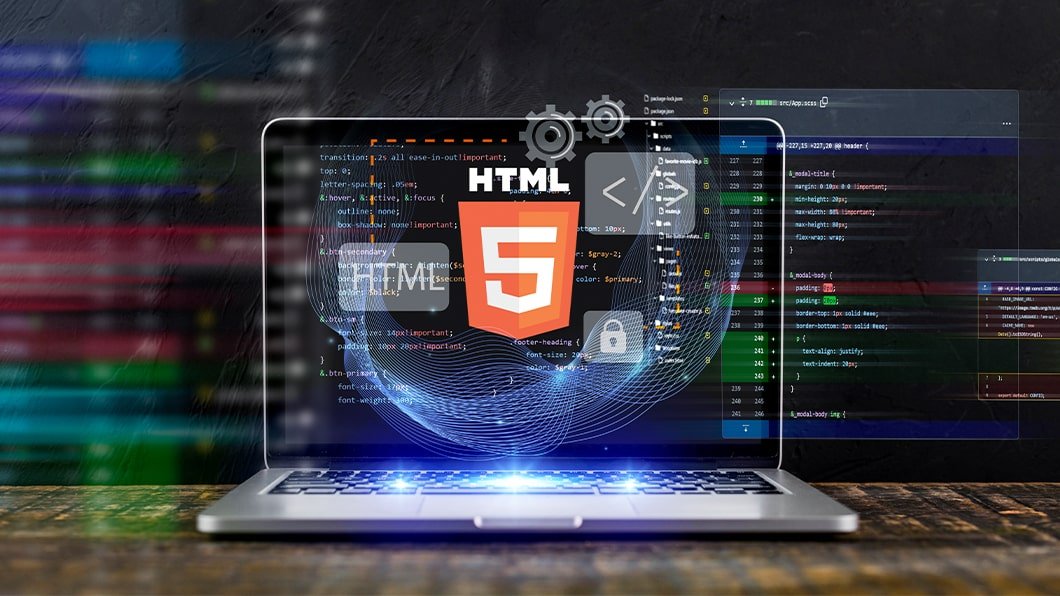
The Birth of HTML: Shaping the Web as We Know It
Introduction
In the vast landscape of the digital world, where websites dominate our online experiences, HTML (Hypertext Markup Language) holds a crucial position as the backbone of the World Wide Web. As we click and scroll through web pages, it’s worth delving into the fascinating story behind the birth of HTML and understanding how this simple yet powerful language has shaped the internet as we know it today.
The Birth of HTML:
In the early 1990s, a visionary scientist named Sir Tim Berners-Lee was working at CERN, the European Organization for Nuclear Research. Frustrated by the lack of an efficient system to share information among researchers, Berners-Lee conceptualized a decentralized network of computers interconnected through hyperlinks, thus laying the foundation for the World Wide Web.
To bring his vision to life, Berners-Lee needed a language that could create and structure documents accessible over the internet. In collaboration with his colleague Robert Cailliau, he developed HTML as a markup language—a way to describe the structure and content of web documents.
The Evolution of HTML:
The initial version of HTML, released in 1991, was a simple language with limited functionality. It allowed basic text formatting, the creation of headings, paragraphs, and lists, and the inclusion of images. However, as the web gained popularity, the need for more advanced features became evident.
The introduction of HTML 2.0 in 1995 marked a significant step forward. It introduced new elements like tables, forms, and image maps, enabling more complex and interactive web pages. This version also standardized the use of HTML across different web browsers, ensuring consistent rendering of web content.
HTML continued to evolve rapidly, with each new version bringing more sophisticated features and improved capabilities. HTML 3.2, released in 1997, introduced support for frames, which allowed developers to divide a web page into multiple sections. HTML 4.0, released in 1997, further expanded the language with features like cascading style sheets (CSS) and improved support for scripting languages.
The Modern Era: HTML5

HTML5, the latest and most widely used version of HTML, was first introduced in 2014. It represented a significant milestone in the evolution of the language, offering a wide range of new elements, attributes, and APIs. HTML5 brought native support for multimedia elements like audio and video, making it easier to embed media content within web pages.
Furthermore, HTML5 introduced semantic elements such as <header>, <nav>, <section>, and <article>, which provided better structure and accessibility to web documents. It also facilitated the development of rich web applications with features like offline storage, drag-and-drop support, and geolocation capabilities.
HTML5’s robustness and flexibility made it the go-to choice for web developers. It allowed them to create visually stunning websites, deliver seamless user experiences, and build responsive designs that adapt to different devices and screen sizes.
HTML’s Impact on the Internet:
The widespread adoption of HTML has had a profound impact on the internet and our daily lives. Here are a few key ways in which HTML has shaped the digital landscape:
- Universal Accessibility
HTML’s simplicity and versatility have made it accessible to a wide range of users, from amateur website creators to professional developers. Its open nature and adherence to web standards have ensured compatibility across different browsers and devices, making web content accessible to users regardless of their preferred platform. - Universal Accessibility
HTML’s simplicity and versatility have made it accessible to a wide range of users, from amateur website creators to professional developers. Its open nature and adherence to web standards have ensured compatibility across different browsers and devices, making web content accessible to users regardless of their preferred platform. - Structural Organization
HTML’s ability to structure content using elements like headings, paragraphs, and lists has not only made web pages more readable but has also had significant implications for search engine optimization (SEO). By providing a clear and organized structure to web documents, HTML helps search engines understand and index content more efficiently, improving the discoverability of information on the web. - Seamless Integration with Other Technologies
HTML’s design as a markup language allows it to seamlessly integrate with other web technologies. Cascading Style Sheets (CSS) can be used to control the presentation and layout of HTML elements, while JavaScript enables dynamic interactivity and functionality. This combination of HTML, CSS, and JavaScript forms the backbone of modern web development, enabling developers to create visually appealing, interactive, and responsive web experiences. - Evolution of Web Applications
HTML has played a crucial role in the development of web applications, blurring the line between traditional desktop software and online experiences. With HTML5’s introduction of new features and APIs, web applications have become more powerful, offering functionalities that were once exclusive to native applications. HTML5-powered applications are now capable of offline storage, real-time communication, multimedia playback, and even complex graphics rendering, allowing users to accomplish tasks and access information directly from their browsers.
Looking Ahead:
As technology continues to advance, HTML will undoubtedly undergo further transformations and updates to meet the demands of an ever-evolving digital landscape. The future of HTML is likely to focus on enhancing accessibility, improving performance, and providing new capabilities to support emerging technologies such as virtual reality, augmented reality, and the Internet of Things (IoT).
In conclusion, the birth of HTML laid the foundation for the World Wide Web and revolutionized the way we access and interact with information online. HTML’s simplicity, versatility, and continuous evolution have shaped the internet into a vast and interconnected network of knowledge and experiences. As we navigate the digital realm, let us appreciate the profound impact that HTML has had on our lives and the limitless possibilities it holds for the future of the web.
The Future of HTML: Innovations and Possibilities

HTML, as the backbone of the World Wide Web, has come a long way since its inception. As we look to the future, there are several exciting innovations and possibilities on the horizon for HTML and web development as a whole.
- Progressive Web Apps (PWAs): PWAs are web applications that combine the best features of websites and native applications. They offer a more app-like experience, including offline functionality, push notifications, and the ability to be installed on users’ devices. HTML, along with modern APIs like service workers, is instrumental in building PWAs and enabling seamless user experiences across different devices.
- Web Components: Web Components are a set of web platform APIs that allow developers to create reusable and encapsulated custom elements. These elements can be used to build complex web applications by combining HTML, CSS, and JavaScript in a modular and interoperable manner. Web Components promote code reusability, maintainability, and improved performance, paving the way for more scalable and efficient web development.
- Augmented Reality (AR) and Virtual Reality (VR): With the growing interest in AR and VR technologies, HTML is poised to play a significant role in their integration with the web. HTML’s support for multimedia elements, 3D graphics, and interactivity makes it an ideal platform for creating immersive AR and VR experiences. As web standards evolve, we can expect HTML to offer even more powerful APIs for developing AR and VR applications directly within web browsers.
- Web Assembly (Wasm): Web Assembly is a binary instruction format that allows developers to run high-performance applications on the web. While not a replacement for HTML, Wasm works alongside HTML to execute computationally intensive tasks efficiently. By leveraging Wasm, developers can bring existing software written in languages like C++, Rust, and Go to the web, opening up new possibilities for web-based applications with near-native performance.
- Accessibility and Inclusivity: HTML has always been focused on accessibility, ensuring that web content is available to all users, regardless of their abilities. In the future, we can expect HTML to continue improving accessibility features, making it easier for developers to create inclusive web experiences. This includes enhanced support for assistive technologies, better semantic markup, and more accessible multimedia elements.
Conclusion
In conclusion, the birth of HTML laid the foundation for the World Wide Web and revolutionized the way we access and interact with information online. HTML’s simplicity, versatility, and continuous evolution have shaped the internet into a vast and interconnected network of knowledge and experiences. As we navigate the digital realm, let us appreciate the profound impact that HTML has had on our lives and the limitless possibilities it holds for the future of the web.
The birth of HTML revolutionized the way we access and share information on the internet. From its humble beginnings as a simple markup language, HTML has grown into a versatile tool that powers the modern web. Its continuous evolution and adoption of new standards have empowered developers to create dynamic and interactive websites, transforming the online landscape.
From the rise of PWAs and web components to the integration of AR, VR, and Wasm, HTML is poised to embrace emerging technologies and provide a foundation for building dynamic and immersive web experiences. As developers push the boundaries of what is possible, HTML will continue to adapt and evolve, empowering creators to build websites and applications that engage, inform, and inspire users around the globe
The future of HTML is bright, and its journey has only just begun. As we navigate the ever-changing landscape of the internet, let us embrace the potential and endless opportunities that HTML brings, as it continues to shape the digital world we live in.
FAQs(Frequently Asked Questions)
FAQ 1: How has HTML evolved over time?
HTML has undergone significant evolution since its inception. The early versions of HTML provided basic text formatting and limited structural elements. As the web grew, new versions of HTML introduced more advanced features, such as tables, forms, frames, cascading style sheets (CSS), multimedia support, and semantic elements. The latest and widely used version, HTML5, brought significant enhancements, including improved multimedia support, better semantics, and support for web applications.
FAQ 2: What is the relationship between HTML and CSS?
HTML and CSS (Cascading Style Sheets) work together to create web pages. HTML is responsible for defining the structure and content of the page, while CSS is used to control the presentation and layout. HTML elements are marked up with tags, defining the different parts of a web page, while CSS rules are used to specify how those elements should be styled, including aspects like colors, fonts, positioning, and more.
FAQ 3: Can HTML be used for dynamic web applications?
While HTML provides the structure and content of a web page, dynamic functionality is often achieved by combining HTML with other technologies, such as JavaScript. JavaScript allows developers to add interactivity, manipulate the HTML content, and respond to user actions. Together, HTML, CSS, and JavaScript form the foundation for creating dynamic and interactive web applications.
FAQ 4: Is HTML accessible for people with disabilities?
HTML has accessibility features built into its structure, making it possible to create web content that is accessible to people with disabilities. By using appropriate semantic elements, alt attributes for images, and adhering to web accessibility guidelines, developers can ensure that their HTML content is accessible to users who rely on assistive technologies such as screen readers or those with visual impairments.
FAQ 5: What is the future of HTML?
The future of HTML is likely to involve further enhancements to support emerging technologies and improve the web development process. This includes advancements in areas such as Progressive Web Apps, Web Components, integration with augmented reality and virtual reality, and ongoing efforts to enhance accessibility and inclusivity. HTML will continue to evolve and adapt to meet the changing demands of the digital landscape.





